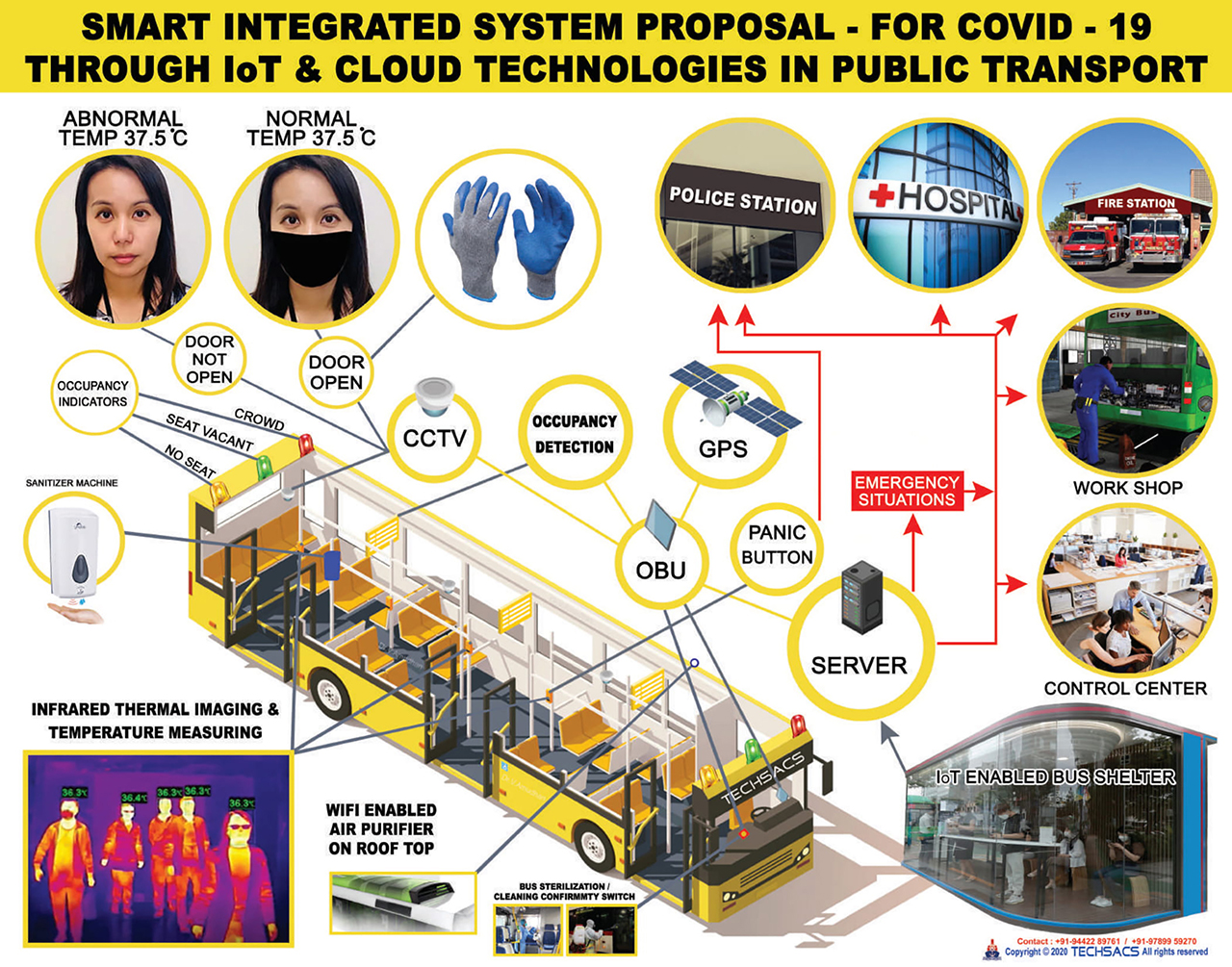The public transport system has taken a huge beating given the need for social distancing in the wake of the pandemic. The question is how can the trust of the commuters be regained? Dr. Amudhan Valavan opines that using integrated technologies to ensure commuters’ wellbeing and safety may be the answer
Given the ongoing pandemic, public transport systems have to be considered as a high-risk environment due to the following reasons: 1) High number of people in a closely confined space; 2) No information access to identify potentially sick or infected persons; 3) A variety of common surfaces to touch such as ticket machines, handrails, door knobs, etc.

Public transport is an essential service to provide mobility, especially in a critical phase such as the pandemic since it provides access to healthcare facilities. The key objective for public transport operators therefore is to maintain the operations with interruptions. Consequently, public transport operators should focus their pandemic plan efforts on the staff to try and protect them and be also prepared to deal with absenteeism while taking into consideration the need to increase the safety factor for people inside the vehicle.
As a global public transport expert and CEO of a scientific research establishment, I have been closely following the events occurring since the entry of the corona virus. Post the pandemic, the use of public transport has drastically come down to 30% globally from a minimum 70%, leading to great economical loss. People have started buying personal vehicles which will contribute to congestion and global warming in the future. It is mandatory that new technologies be implemented immediately to encourage public transport. It is also a well-known fact that the general public is hesitating to commute using public transport for their official, recreational and business travel post the pandemic.
The pandemic has dramatically changed the landscape of public transport which is largely due to the restrictions that has been put on public gatherings and using mass transit or public transport in view of the need for safety and social distancing. It is mandatory to strictly follow the rules for personal as well as social safety. From my perspective, leveraging technologies would help to encourage people to use public transport for their official, recreational, business travel and routine work. Technological intervention has to be undertaken in full swing to restore the services to people in a safe manner.

Technology Intervention
An innovative smart integration of scattered technologies is required in the domain of public transport. The gap in the existing system is that the technologies are available individually in different countries. Only certain features are implemented in a few parts of the world. The technology is not yet brought under one roof as an integrated system. The main idea is to create an umbrella of technologies interconnected with the help of Internet of Things (IoT) and cloud implementations. This will enable constant monitoring, control and accumulation of large amounts of data for studies, research and planning.
All sensors and nodes in public transport must be connected with cloud technologies. With such an integrated system, governments and other institutions would be able to monitor the movement of people and thereby establish strict social distancing rules. The medical history of individuals should automatically be studied using artificial intelligence to identify infected people or people recovering from the corona virus and ensure quarantine for such individuals and restrict their freedom to enter public transport places. Other technologies like CCTV and thermal imaging-based monitoring inside buses could be used effectively to implement social distancing inside closed spaces.
Warning the driver or conductor in time if any passenger violates any of the safety measures must be given importance. Once a connected system is established it can not only be used to implement safety for the post-pandemic scenario but the data could be used effectively to predict service needs, and take adequate measures in times of emergency. Only this course of action is futuristic and a logically safe way to resume public transport activities. Initial investments and implementation do take a lot of time and resources but this technology will accelerate growth manifold. Traditional cleaning methods must be replaced with automated UV room systems. Smart bus shelters with temperature and PPE monitors are necessary. Connected technologies can change the whole outlook of shared transport.
The above picture shows the nodes from which data can be collected from inside a bus. During a bus ride there is integration of CCTV, GPS, emergency buttons, thermal scanners, seat occupancy detection algorithms, and many more. This can help establish an intelligent network of systems. Human transportation experience is enhanced to a whole new level. All these technologies are individually available but are not integrated into one system yet. Development of such an integrated system is the need of the hour. And it is the only stairway to the future. In conclusion, the above mentioned technology would help to make public transit more resilient and reaffirm commuters’ trust to use public transport.
—
The author possesses over 27 years of experience in the fields of public transport and urban mobility and has sound expertise in urban mass transit operations, strategic transportation planning, transport policy development, transport appraisal/evaluation, fleet/transport management, project management, and stakeholder management. He has worked with SETC Chennai, and also as an independent consultant and adviser to RTA, Dubai and KPTC, Kuwait etc. on several technical assistance and training projects in India and the Middle-East and managed a number of projects involving numerous experts and multidisciplinary teams.